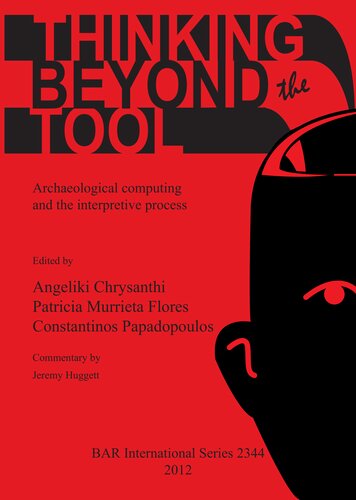

Most ebook files are in PDF format, so you can easily read them using various software such as Foxit Reader or directly on the Google Chrome browser.
Some ebook files are released by publishers in other formats such as .awz, .mobi, .epub, .fb2, etc. You may need to install specific software to read these formats on mobile/PC, such as Calibre.
Please read the tutorial at this link: https://ebookbell.com/faq
We offer FREE conversion to the popular formats you request; however, this may take some time. Therefore, right after payment, please email us, and we will try to provide the service as quickly as possible.
For some exceptional file formats or broken links (if any), please refrain from opening any disputes. Instead, email us first, and we will try to assist within a maximum of 6 hours.
EbookBell Team

4.3
38 reviewsThe idea of putting together this book was inspired by the session 'Thinking beyond the Tool: Archaeological Computing and the Interpretive Process', which was held at the Theoretical Archaeology Group (TAG) conference in Bristol (17-19 December 2010). The session, as well as the regular format of paper presentations, included a round table discussion at the end of the session, to provide a debate forum for the participants, and encourage the development of the dialogue which emerged from the various presentations. This format not only facilitated the discussion on a better theorised approach to computer applications in archaeology, but also allowed delegates with diverse backgrounds to elaborate on common concerns from different perspectives. The overarching theme of the session, which revolved around how the various computational tools affect the ways we practice archaeology and interpret and disseminate aspects of the past, generated a series of stimulating debates.